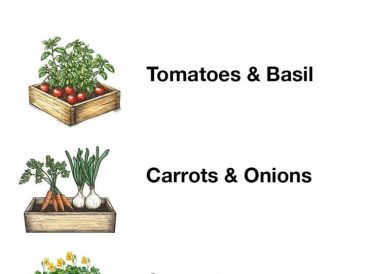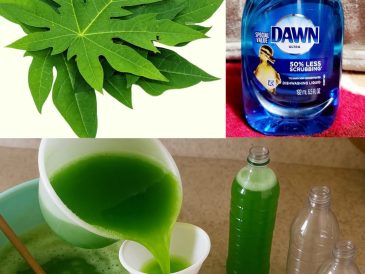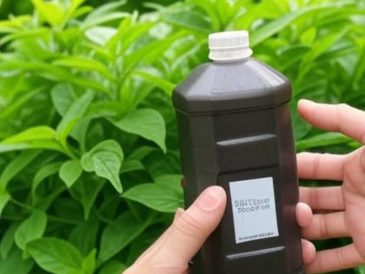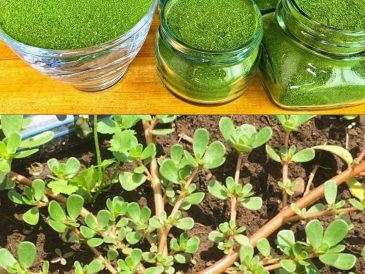So, as some of you might already know, I’m a HUGE fan and advocate of companion planting.
I’ve written many articles around it and experimented with countless different plant pairings that I share with you guys on a regular basis.
Today’s article will be a little different, however. Instead of general companion planting, we’ll examine plants you can specifically pair together in containers or grow bags, and walk you through a list of all the pairings that work.
Let’s dig deep into this, shall we?
How Companion Planting Works In Containers

Before we get to the actual pairings, let’s first discuss what exactly we’re looking for. The concept here is simple, match plant partners based on:
- Root depth;
- Growth habit;
- Pest resistance;
- Watering requirement;
- Or other qualities that make for a harmonious, productive pairing.
While pairing in the garden is quite simple and straightforward, it’s definitely not the same in a container. Limited space and soil mean you’ll have to weigh your options and pair much more wisely.
Spacing, water requirement, and sunlight are some important factors to keep in mind when deciding between companion plant options.
Companion Plant Combos That Just Work

1: Tomatoes + Basil

Yeah…this one isn’t my most original idea. Tomato and basil is a classic pairing that has stood the test of time. This companionship works because basil improves tomato flavor and repels pests.
2: Carrots + Lettuce

If there’s anything I love more than a glass of chilled water on my nightstand at 3 a.m., it’s a classic wintertime plant pairing. Carrots and lettuce have shallow roots and cool-weather needs that make them productive and space-efficient when paired together.
3: Peppers + Marigolds

Although this pairing of a majestic flower and spicy vegetable may seem a little odd, it can actually work quite well in the garden. Marigolds help repel aphids and nematodes, while peppers enjoy the sun.
Tip: Use a 5-gallon grow bag to make enough room to grow these two together.
4: Cucumbers + Radishes

Radishes deter cucumber beetles thanks to their spicy aroma and grow very fast, giving way as cucumbers spread.
Tip: Let your cucumbers climb vertically to free up space and add more productivity to the garden.
5: Kale + Garlic

As you might already know, garlic is very useful for repelling aphids and moths in the garden due to their powerful, pungent aroma. When paired with a leafy green like kale that’s quite susceptible to pest issues, garlic can provide beneficial pest protection at all times.
6: Beans + Nasturtiums

Beans have nitrogen-fixing qualities that can be beneficial not only to them but to other plants around them as well. Because nasturtium is a trap crop, you can pair it with beans to attract aphids away.
Tip: Use bush beans for container-growing ease.
7: Eggplant + Thyme

Eggplant and thyme form a supportive companionship because thyme deters garden moths and grows low without crowding the eggplants.
Tip: Use one large pot or shared grow bag with well-draining soil to grow these.
8: Spinach + Strawberries

Because spinach thrives in cool conditions, it can act as living mulch under strawberry plants, especially in smaller-sized pots or grow bags.
9: Chives + Parsley

Both chives and parsley are compact herbs that grow really well side by side. I’ve given this pairing a try many times in my garden, and let’s just say that my savory dishes have been very well garnished since then.
What To Avoid When Pairing Plants In Containers?

There are a few more things you need to keep in mind when pairing plants in containers, because even if they meet all the basic requirements above, they still might not be a good match!
Issues like combining heavy feeders in small spaces and overcrowding with aggressive growers, or mixing plants with very different water needs can quickly throw off the balance and lead to poor growth. Here’s a few examples:
- Avoid mixing heavy feeders together like tomatoes + peppers;
- Avoid combining plants with opposite water needs like rosemary + lettuce;
- Avoid mixing short and long season crops like spinach + eggplant.
Tiny Gardens, Thriving Plants!

Contrary to popular belief, you don’t actually need the biggest garden to have thriving plants. With a little bit of thoughtfulness, strategy, and proper accommodation, you can grow the best plant pairings in even the smallest of containers or grow bags!




